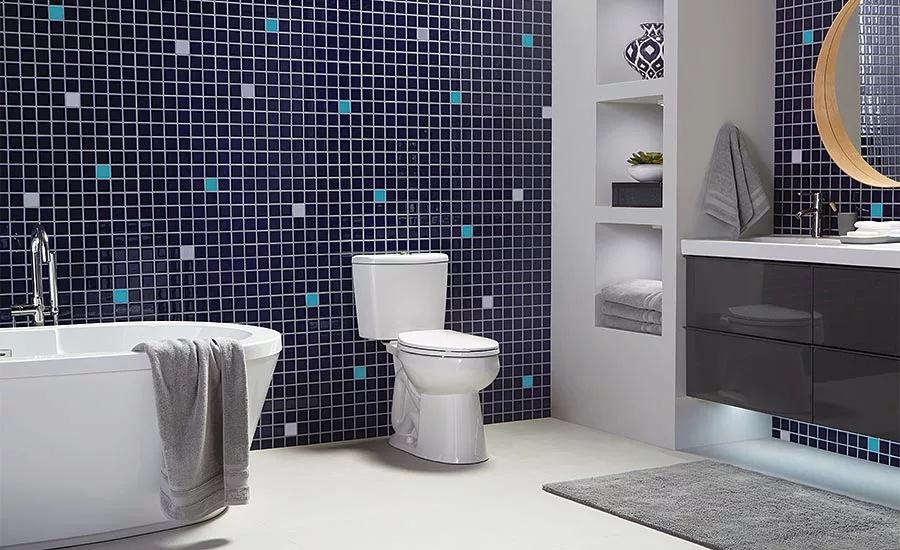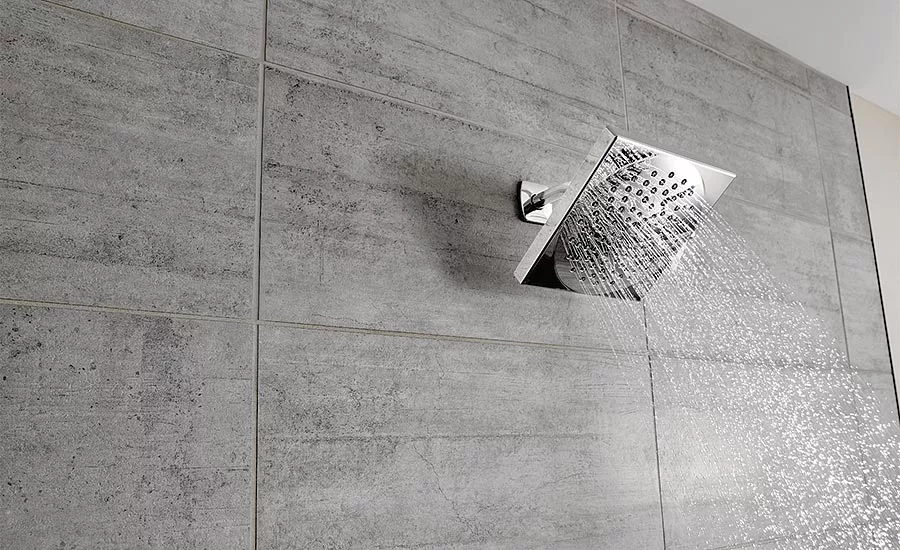Plumbing industry wholeheartedly backs WaterSense program
WaterSense has helped consumers save an estimated 4.4 trillion gallons of water since 2006.



Earlier this year, spring floods hit Indiana, Michigan and Ohio hard, killing several people and displacing thousands of others from their homes. And, as this article is being written, Hurricane Sally threatens the Gulf Coast. With headlines like this making the news, it’s hard to believe that the U.S. could be running out of water, but a government-backed study released last year predicts serious water shortages due to increasing population and climate change. By 2071, nearly half of fresh water basins in the U.S. may not be able to meet the monthly water demand. That’s why program’s like EPA’s WaterSense are more important than ever.
“Part of what makes water efficiency so important is clean, drinkable water is finite, and without this precious commodity, humans or any living creature cannot survive,” says Dominic Sims, CEO of ICC. “To make this matter even more urgent, without proper precautions such as increased care for water efficiency, society is in true danger of running out. Even though 70% of our planet is covered with water, less than 1% is drinkable, and the World Health Organization (WHO) estimates that by 2025, half of the world’s population will be living in water-stressed areas.
“Programs like WaterSense help address the world’s ongoing water crisis,” he continues. “The WaterSense-labeled new homes save about 10,000 gallons of water per year, or enough water to fill a backyard swimming pool. These new homes also incorporate a hot water distribution system that decreases the amount of water lost while waiting for hot water to reach their faucet or shower, so residents don’t waste time, energy and thousands of gallons waiting for hot water to reach the tap or tub.”
Sims notes water managers in 40 states expect local, statewide or regional water shortages over the next several years due to water supply and infrastructure challenges. Americans use an average of 88 gallons of water every day at home, while the average family spends more than $1,000 per year in water costs. However, they can save more than $380 annually by retrofitting WaterSense labeled fixtures and ENERGY STAR certified appliances.
“By applying the proper programs and with the use of modern and innovative building codes, we are able to create sustainable, water efficient buildings,” he notes.
Per the EPA, the WaterSense label indicates to manufacturers and retailers that these products can help meet individual, local or state water efficiency goals. Through 2019, WaterSense partners have helped consumers save an estimated 4.4 trillion gallons of water and more than $87 billion in utility bills.
WaterSense has expanded the number of product categories it has labeled and continues to maintain its home labeling program, which began in 2009, and its program to recognize organizations that certify irrigation professionals. WaterSense currently has specifications for seven product categories and more than 37,000 product models have been approved to use the WaterSense label.
“The plumbing industry has really embraced this program,” notes Kerry Stackpole, CEO and executive director of PMI. “If you go back to the start of the program, there were probably less than a thousand fixtures you could buy, and they were mostly toilets and faucets. In today’s world, you can buy more than 35,000 different WaterSense-compliant products. The industry has not only embraced it, but it continues to look for innovative ways to help consumers save water and save energy while giving them, frankly, a vast array of choices.”
WaterSense has been the model of a successful public-private sector success story, according to Pete DeMarco, vice president of advocacy and research for IAPMO.
“WaterSense is not only important to the plumbing industry, but for all business sectors, as it allows for ongoing development through more precise water resource planning in water stressed areas,” he says. “The program has become increasingly effective. WaterSense now has active specifications for all applicable plumbing products, and in recent years, has added focus to outdoor uses of water, specifically for landscape irrigation. The EPA WaterSense Home program is embarking on the second revision to their specification and will become increasingly effective with the addition of new performance-based provisions and the referencing of existing water-efficiency standards as the basis of their whole-house water use calculations.”
Industry partners
When WaterSense first launched, it had a handful of partners in its battle to create water-efficient benchmarks for the plumbing industry. Today, more than 2,000 organizations work with and promote the program, including manufacturers, builders, utilities, trade associations, non-profits and federal, state and local governments.
“As an industry, WaterSense has set a standard for water efficiency,” says Richard Rossi, national account manager — new construction, Niagara Conservation Corp. “It has moved the industry away from creating and installing inefficient products, and created demand for newer, more powerful water-efficient options. Meeting the WaterSense standard has become the minimum threshold for new fixtures.
“Today, at a time when people are very focused on cleanliness — extra hand washing, etc. — water use will be on the rise,” Rossi adds. “Water is a finite resource, and as populations grow and temperatures rise, people are becoming more aware of the importance of protecting our natural resources. We need to preserve these resources for future generations and the best way to do that is to use less of them now. Water-efficient fixtures make this possible without much extra thought or effort on the part of the consumer.”
Moen is another manufacturer partner of the WaterSense program.
“Everything we do during our time on this planet impacts future generations,” says Mike Reffner, group product manager, bath category, Moen. “That includes how we use our resources, particularly water. At Moen, we’re committed to creating products that not only save water but also create an exceptional experience with it — and make reducing water usage easy. That’s the concept behind Mission Moen, our recently announced sustainability commitment that is focused on helping preserve and protect our planet’s most precious resource — water — while improving how people interact with it in their daily lives.
“The first aspect of this mission includes a promise to help conserve one trillion gallons of water over the next decade,” he continues.
DeMarco notes that the water related problems our nation and the planet face will only become more complex and challenging as populations continue to grow and water supplies diminish.
“The efficient use of water is an important quotient in helping to ensure that society can make the best possible use of this essential resource,” he says. “The WaterSense program will continue to play an important role in helping U.S. consumers make smart choices when purchasing plumbing products.”
UNDER SCRUTANY
Earlier this year, the WaterSense program was targeted for elimination by the Trump administration due to tightening budget constraints.
“Since President Trump’s election in 2016, the White House budget has sought to either eliminate the WaterSense program or to zero out its budget,” notes Pete DeMarco, vice president of advocacy and research for IAPMO. “Fortunately, WaterSense is popular with both Democrat and Republican members of Congress and, due to its successes, and enjoys great support from both industry and environmental stakeholders. It’s hard to say if this attempts to defund the program will continue, but even if the president is reelected, I believe that the program will survive due to its wide support.”
“Each year, those who are responsible for setting national budgets look at programs and make value judgements on whether or not they think they’re appropriate to fund,” adds Kerry Stackpole, CEO and executive director of PMI. “The good news is WaterSense is a relatively inexpensive program — I think their latest budget was around $3 million. It’s a highly successful public-private partnership. Members of Congress, on a bipartisan basis, frankly, have seen the wisdom of continuing to fund the program. I don’t think it is done out of malicious intent, but whenever you’re working with budgets, you have to make some hard choices. Part of what we do is work very hard to show the benefit and value of the WaterSense program. For example, you could fill 67,000 Olympic-sized swimming pools with the amount of water saved under the WaterSense program — that’s a phenomenal amount of water.”
Because WaterSense helps reduce water in households, which in turn, reduces energy use, the program helps Americans relieve societal pressures in terms of being energy efficient, Stackpole says.
“The industry has fully embraced the WaterSense program — just look at the scale or growth of WaterSense labelled products. When we go talk to members of Congress or the administration, our tendency is to point out that this is something that's great for society, good for Americans and, in fact, it delivers products that really do work — it's kind of a win, win, win.”
Dominic Sims, CEO of ICC, notes WaterSense has long been a bipartisan effort ever since its creation during the Bush administration.
“In recent years, deregulation has gained traction and programs like WaterSense that feature government involvement have become more politicized,” Sims says. “That said, WaterSense is still a highly regarded collaboration between the government and private sector. Leveraging the private sector means that the federal government’s contribution to this program has been modest at most. Although the program is voluntary, it has been very popular with consumers. The results speak for themselves. According to EPA, customers are saving around $1,100 for every federal $1 invested and, since its inception, the program has saved 4.4 trillion gallons of water and more than $87 billion in water and energy bills.
“As for our role in ensuring the program continues to stay funded — each year, our team advocates for WaterSense with the key congressional committees charged with determining the program’s federal spending levels. We also leverage our leadership position in the High Performance Building Coalition to advocate for continued support of the program.”
Looking for a reprint of this article?
From high-res PDFs to custom plaques, order your copy today!








